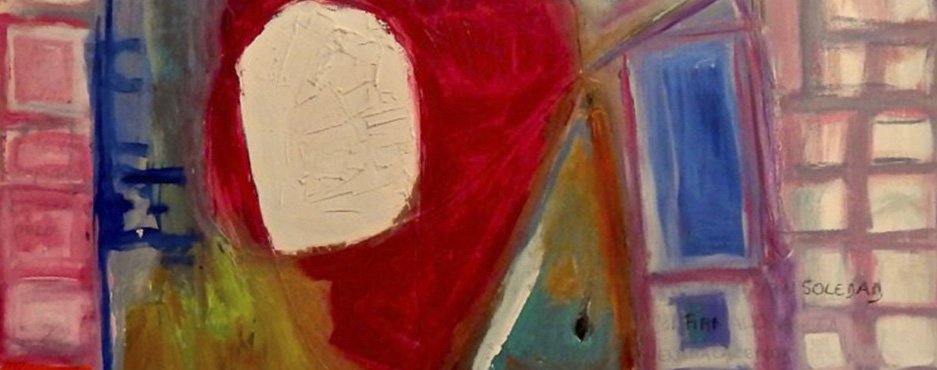The human mind feels the need for abstraction. In fact, this need is one of the constituent elements in each aspect of its own expression and is intimately linked to the creation of symbols. So, if separated, they tend to condition one another. Since the emergence of art, abstraction has been closely linked to magic or esotericism; to obscure evil forces.
Nowadays, we understand abstraction differently from what it used to be in the past. This occurred even from one generation to the following, due to the weakening of support amongst its followers. We have confirmed that what had motivated the formation of the so called modern art and in this particular case, abstract art, has been the trend to self-criticism.
What is modernism claiming? By using the same discipline to criticize major systems, one could also criticize the discipline itself. If we analyze deeply such a course of criticism, according to the principle of modernism, art itself is indisputable. This in turn, leads us to understand that art exists as a subject and this is precisely the case of painting art in itself. Consequently, any aspect of art that has been taken into consideration, when subjected to self-criticism, finally ends up in a result as pure. The fact of moving on from simple observation to the essential spirit and from simple imitation of reality (mimesis) to the visual expression, is a major contribution in the field of criticism, to what would never have had any relevance otherwise, as for instance, sincerity.
It is important to remember that despite theories arguing that abstract expression ended up losing interest with respect to the time it was developed and accepted, still it should be considered, because it has already yielded fruit and therefore has been assimilated.
At this point, Gina Mariotto resumes and answers the call of artistic process, the eternal call of that primary pulsation manifested in a sincere gesture. From here, a light seemingly accidental blow can reveal an unexpected way, and make us feel at the mercy of forces that are not fully understood. As Freud has pointed out, it is something that is not explained by our slips and is not due to purely accidental factors; but are the result of inner repressed desires.
We can represent them as waves on the surface of life generated by unexpected sources as deep as the soul itself. Our slips can have the meaning of a new destiny offered to us.
Gina Mariotto’s challenge is to overcome the limits of thought to the point where there is no more room for any reflection. However, if we perceive any sign, it is only to move further within the innermost mental gaps (blackouts) far away from understanding. They include various abstractions and nothingness at the same time; her huge success, perhaps born out of that nothingness. Thus, the result is the benefit we can get by bringing out from our intimate mental gaps whatever contributes to renew ourselves.
In the artist’s exhibition, her paintings, always focused on recalling the past, raise the veil and uncover a mystery of transfiguration, a ritual, a moment, a spiritual passage, that once completed, could be compared to death, to rebirth.
Gina Mariotto, with her work, is showing us that life, her daily life, has surpassed the old conceptions: those ideals that have dominated our emotions are no longer needed and it is precisely at this very moment when the artist invites us to go beyond the threshold to follow her on her journey.
